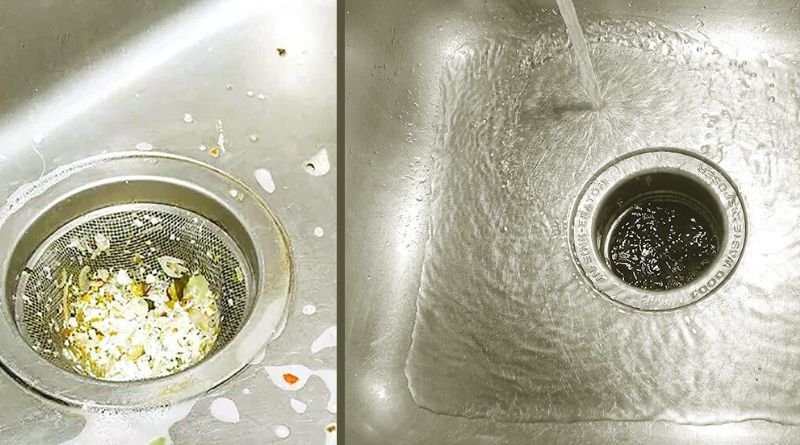Key Takeaways
- Always use cold water when running your garbage disposal to keep pipes clear and reduce grease buildup.
- Know which items to avoid feeding into the disposal to prevent blade damage and clogs.
- Integrate regular, natural cleaning methods into your routine to reduce odors and residue.
Table of Contents
- Proper Use of Cold Water
- Foods to Avoid
- Regular Cleaning Methods
- Preventing Clogs
- Handling Foreign Objects
- Professional Maintenance
- Keeping Your Kitchen Running Smoothly
A garbage disposal is a convenient kitchen appliance that helps manage food waste efficiently and keeps your sink clean. However, without proper care, it can easily become clogged, emit unpleasant odors, or cease to function altogether. Regular maintenance—such as running cold water during use, avoiding fibrous or greasy foods, and cleaning with mild solutions—can significantly contribute to ensuring the system functions properly. Simple habits like these not only prevent damage but also extend the lifespan of your disposal unit.
When problems arise or the system needs an upgrade, professional help ensures safe and lasting results. Experienced technicians specializing in garbage disposal installation & repair in Utah can quickly identify issues, perform thorough cleanings, or replace worn-out components. Their expertise helps restore efficiency and prevents costly plumbing problems down the line. Partnering with trusted professionals ensures that your garbage disposal continues to run smoothly, supporting a cleaner and more functional kitchen environment.
Proper Use of Cold Water
One of the most important habits to develop is running cold water before, during, and after operating your garbage disposal. Cold water helps solidify any fats and oils that enter the appliance, allowing the disposal to chop them up easily and flush them down the pipes instead of letting them congeal inside and cause stubborn clogs. Once you’ve finished grinding food waste, let the cold water run for at least 10–15 seconds to push all remaining particles through the drainage system.
Foods to Avoid
Your garbage disposal isn’t a one-size-fits-all solution for every type of kitchen waste. Several items are notorious for causing damage or clogging your unit:
- Fibrous foods: Stringy vegetables such as celery stalks or rhubarb can entangle the blades and stall the motor.
- Starchy foods: Pasta, rice, and potatoes can swell with water, creating a sticky paste that is tough on pipes.
- Fats, grease, and oils: Even small amounts can coat pipes and harden, eventually causing stubborn blockages.
- Hard objects: Bones, pits, and shells can dent or dull the blades and wear out the disposal’s motor.
Regular Cleaning Methods
Clean your garbage disposal at least once a week to eliminate odors and keep the blades free from buildup. Try these safe, effective techniques:
- Ice cubes and salt: Toss in a handful of ice with coarse salt and grind them together to sharpen the blades and scour away stuck-on residue.
- Baking soda and vinegar: Pour half a cup of baking soda into the disposal, followed by a cup of white vinegar. Let the mixture fizz for several minutes, then rinse it thoroughly with a strong stream of cold water.
- Citrus peels: Grind up the peels from lemons or limes to naturally freshen your disposal and eliminate lingering smells.
Each of these options is environmentally friendly and safe for regular use.
Preventing Clogs
Prevention is key to keeping your system running without backup. Feed food scraps gradually, rather than dumping large amounts at once, to allow your disposal process to work more efficiently. Cut up bulkier leftovers before disposal, and try to alternate between hard and soft materials so debris doesn’t collect in one spot. Running your disposal regularly—even briefly and without waste—will also prevent corrosion and keep the mechanisms lubricated.
Be attentive after heavy kitchen use or family meals, as clogs often develop after big cooking sessions. If you notice water draining slowly, run a baking soda and vinegar solution through the system to address minor build-ups before they escalate.
Handling Foreign Objects
Unknowingly dropping items like silverware, glass, or plastic into your garbage disposal is a common mistake. Always turn off the power at the wall or circuit breaker before attempting to retrieve any trapped item. Never put your hand inside the disposal, even if it’s powered off. Instead, use tongs or needle-nose pliers to safely reach the obstruction. After removal, run cold water and briefly operate the disposal to ensure it’s clear of debris or small fragments.
Professional Maintenance
While regular at-home care covers the basics, scheduling an annual inspection with a licensed plumber offers invaluable peace of mind. Professionals can identify early signs of mechanical wear, small leaks, or slow-building clogs that homeowners might miss. Investing in routine checkups helps you address potential issues before they become emergencies and prolongs the overall life of your garbage disposal.
Keeping Your Kitchen Running Smoothly
Consistent maintenance and careful use significantly extend the reliability of your garbage disposal. Regularly practicing good habits and scheduling occasional professional inspections help keep the system efficient, odor-free, and durable. A small effort now can avoid costly plumbing problems later, ensuring your kitchen stays clean and functional.
